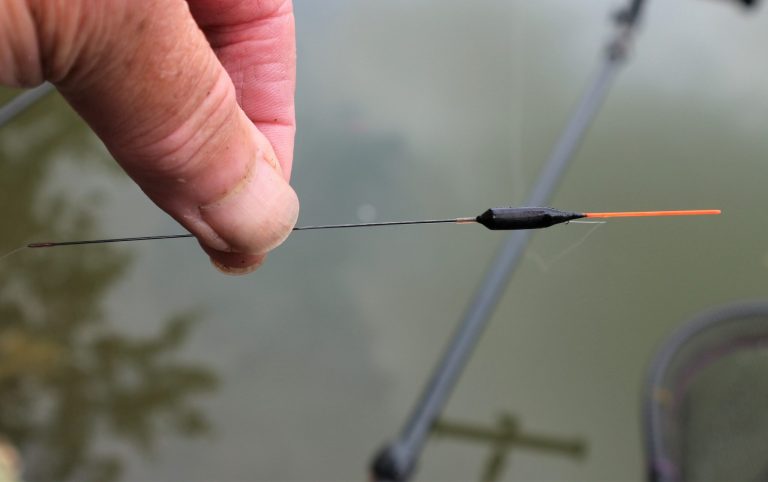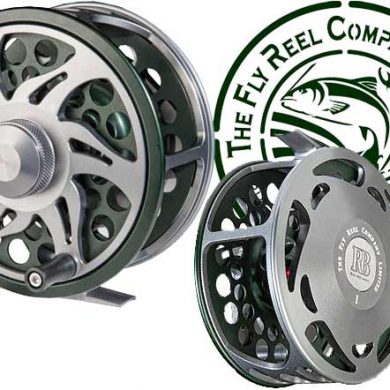WORKING EVERYWHERE
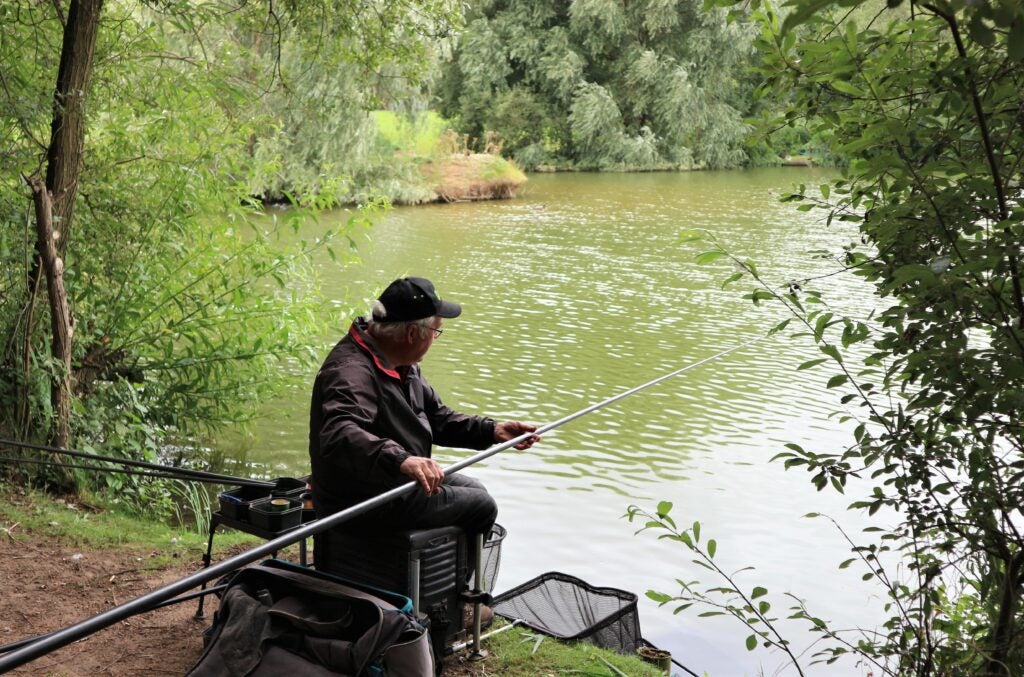
I got into fishing shallow with the pole down South on the regular sweepstakes Mick Toomer used to run through the winter on Basildon’s Gloucester Park Lake. The venue was solid with quality roach, but you rarely caught the bigger ones at full depth. The wiser and older fish would only take baits as they fell through the water, or near the surface, as swims were built up with regular loose feeding. It was possible to win with red fins if carp didn’t show too heavily. My best match catch was over 40lbs of quality roach. When I moved up North, I wasn’t sure if the same tactics would work on the deep, clear water Northumbrian reservoirs, but amazingly they did. I enjoyed many great sessions with my original Gloucester Park rigs, which comprised super-light, wire stem pole floats, taking tiny spread-out number 13 weights. The rigs were normally set between two and four feet deep. The same approach worked yet again when I ended up in the Midlands.
SPECIAL FLOATS
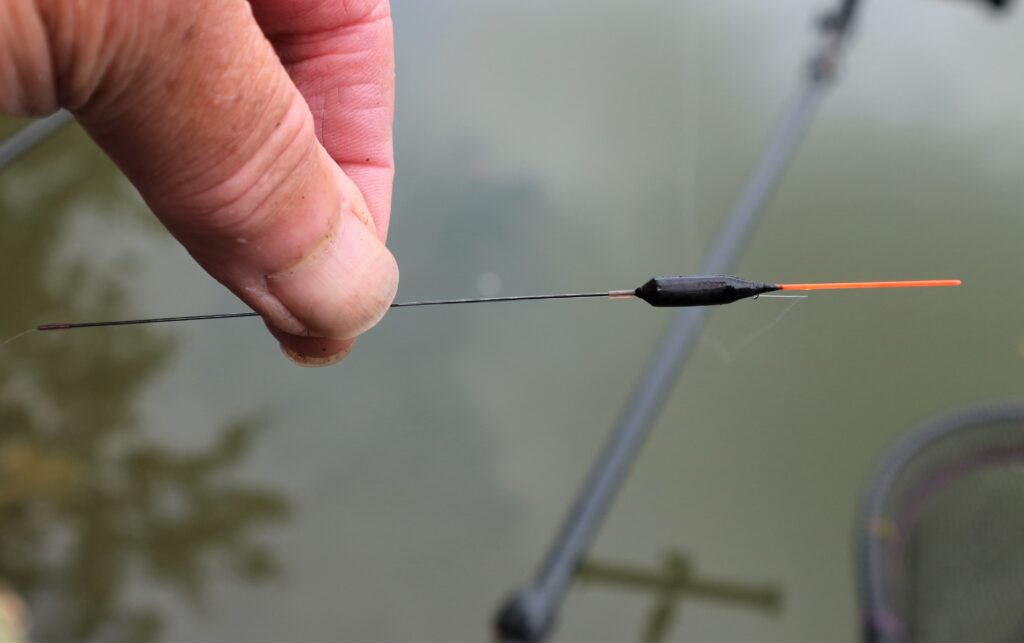
It was tricky modifying floats to perform in the way I wanted for my shallow pole rigs. I managed to trash some nice models, but eventually achieved what I required with a couple of bodied Colmic designs. These had long wire stems and thin, super-sensitive fibre tips. I shaved and sanded the bodies right down to the streamlined shape in the accompanying photograph, then trimmed the wire shorter, until both floats only carried 3 number 13 micro shot. I figured this would be enough to get my hook baits through the surface tension and to give a nice slow fall to everything. The crucial part was having the right balance, so the wire stems would cock the floats automatically. Carbon-stemmed floats don’t do this and you have to work them upright. This spoils presentation and slows everything down. My modified floats have performed even better since I changed the stems to titanium trace wire, which doesn’t keep bending out of shape.
KEY FEEDING
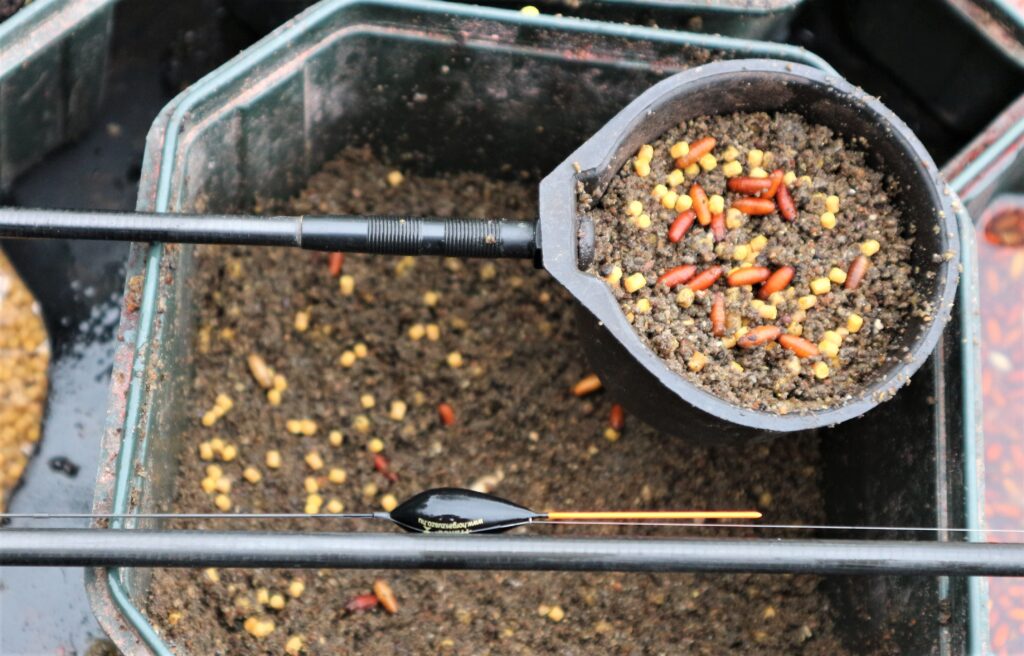
Something I love about our sport is the way important memories stick with you forever. When I first started club fishing, a naturally gifted angler taught me so much. He had an uncanny knack of baiting his swims in such a way that attracted every fish in the vicinity into a feeding frenzy. The way he fed so regularly, with just the right amounts, has engrained itself into my way of doing things. I’ve used this tactic ever since and it’s particularly important when fishing shallow. Drip-feeding small doses regularly will work in its own right, but is nearly always better if it’s done over an initial bed of groundbait or particles. Having a carpet of bait on the bottom pulls lots more fish into the area and far more quickly. It also attracts in species I want to target, like big roach, rudd and hybrids. These are what I call crafty scavengers, who have learnt to pick out free grub without ever being caught, but their one weakness is their inbuilt habit of feeding shallow.
GETTING THROUGH
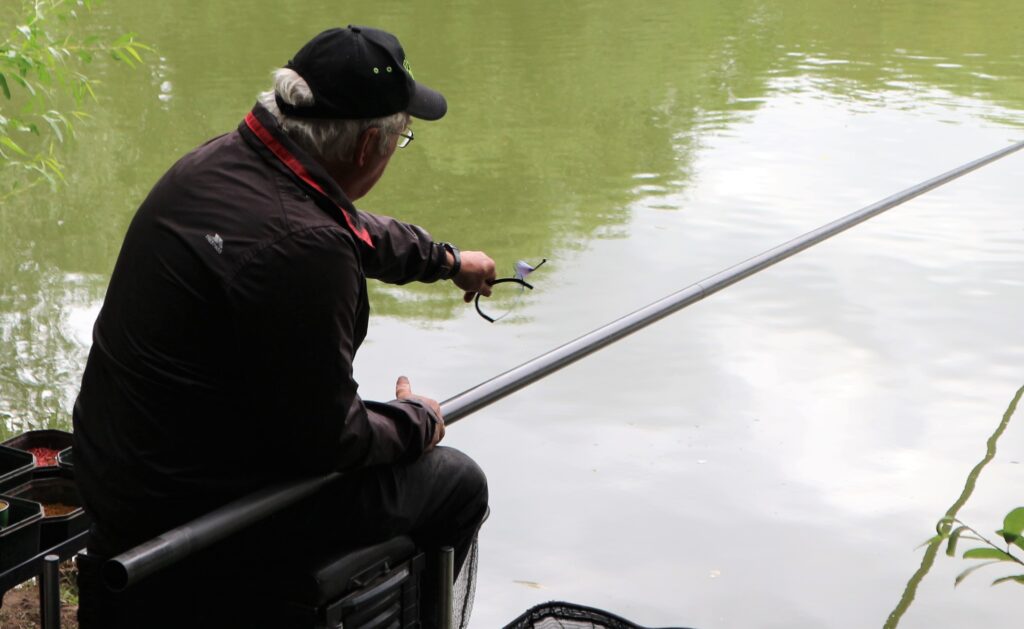
It’s normal to pull in small fish first when dumping a carpet of feed into your swim, but that’s not a bad thing because as you wade through these, bigger samples will gradually be working their way closer. These picky eaters will be clearing up anything the small stuff misses, or even getting to it first by darting in for slower sinking particles. The bigger boys hang around the fringes of your feeding zone, always ready to snatch a freebie when it looks right. It normally takes a couple of hours before these fish begin to get bolder and smaller samples have been thinned out. I begin with a full-depth rig, happy to be getting bites from anything that turns up, deliberately leaving my eventual target fish well alone. I want them to be feeding confidently when I switch my attention their way. Having said that, bonus fish like skimmers and odd net roach often turn up early on a deep rig. Whatever happens, I keep casters going in regularly.
STARTING OVER
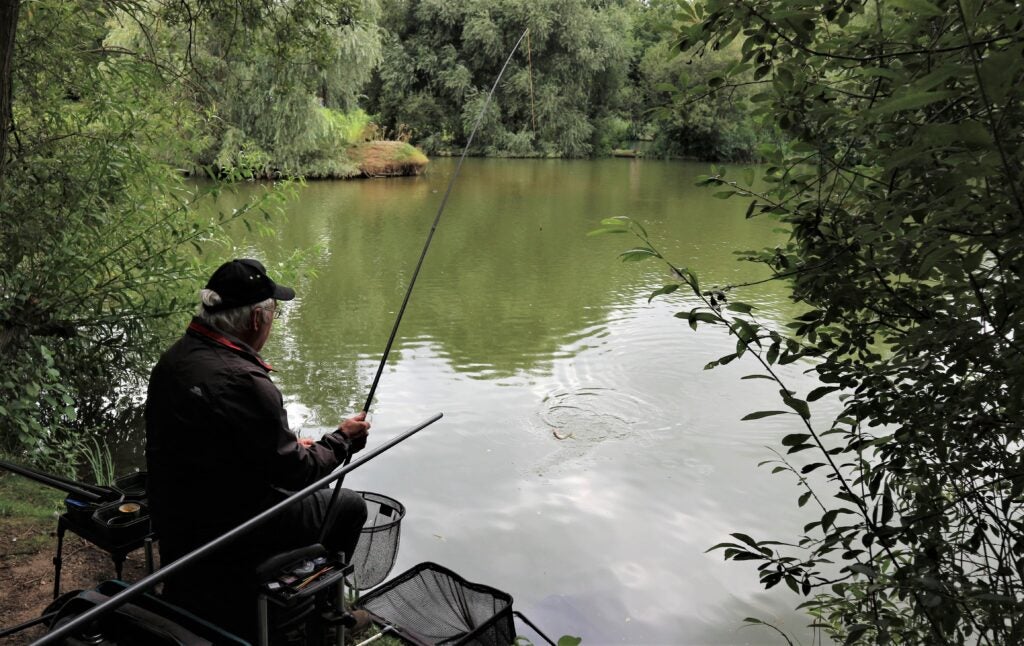
After initially carpeting the bottom and then relying on loose feed, bites normally slow down on the deck as regular baiting pulls fish up in the water. This starts to attract in bigger samples that have been lurking around the fringes of all the activity. When I switch to my shallow rig, there are often small fish still active in the upper layers of water. It’s a case of wading through these again, but normally it doesn’t take long before proper elastic stretchers begin to make things interesting. I use a fine diameter, super-stretchy shock absorber. I know some of the newer products are forgiving enough for silver fish in their thicker gauges, but big diameters are heavier, making the tip of the pole sag and somewhat sluggish. I also think, apart from slowing down hitting lightning-fast shallow bites, thick elastic has less feel factor. Once I hook good fish on light tackle, I like the elastic to properly stretch out and the top kit to have a bit of a bend in it.
TOP CATTIES
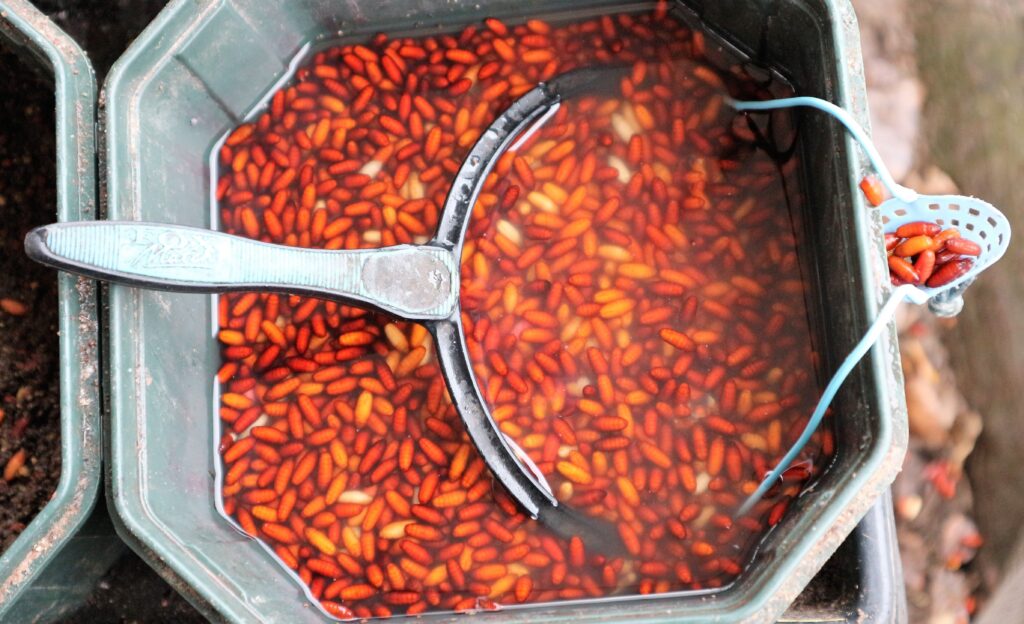
Once I start getting regular bites shallow, the catapult is rarely out of my hands. I use light-action designs with the pole, finding they dink baits like casters, maggots, hemp, or small pellets out perfectly. I often utilise light hollow elastic I’ve used previously in the pole. When pole elastic finally begins to show signs of wear and tear, it’s normally at the leading end. You can feel the area that’s beginning to perish because it’s rough when you pull it through your fingers. After lopping this section off, the rest is okay for use with catapults, rather than wasting an expensive product. I use this with small, perforated Preston plastic cups, while the frame is an old Fox Match design. I have several backup catapults, in case an elastic breaks. I rest my catty across the bowl containing whatever I’m feeding, close by on my bait table. This allows me to load the pouch with my free hand and bring the catapult round to feed without moving my float.
GOOD HOOKING
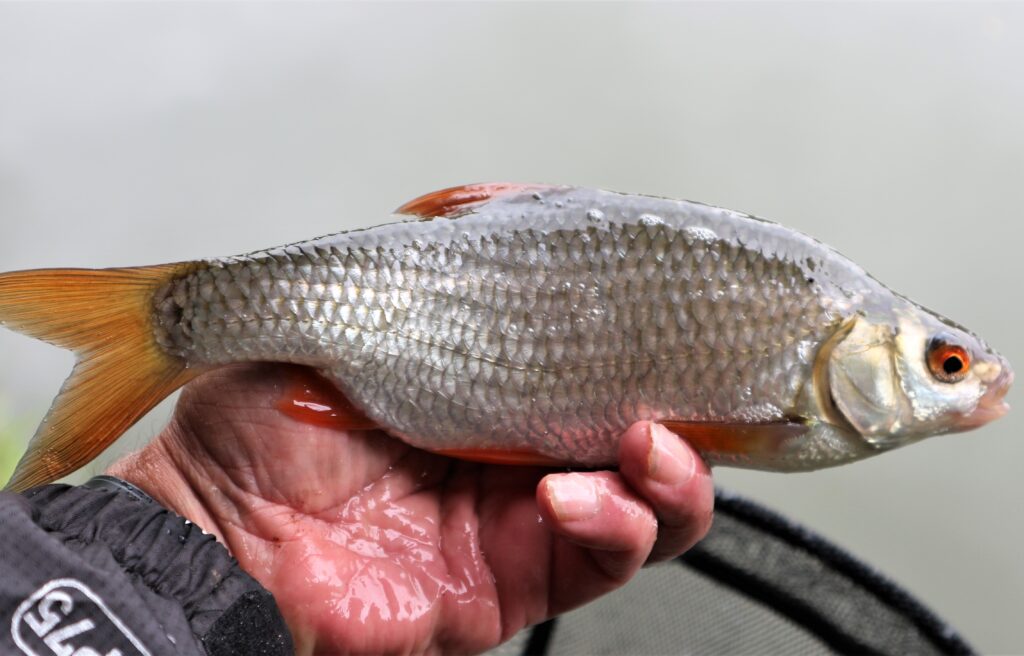
There’s something nice about hooking into quality roach on delicate gear, using a light-actioned pole, as opposed to a carp-style broomstick. My shallow rigs are kitted out with 0.08mm rig line and either size 17 Sensas 3405 Black Feeling hooks, or Drennan size 20 Silver Fish Match. Although there’s a fair difference in stated gauges, these hooks are roughly the same size! I flatten the barbs on the Sensas ones, while the Drennan model is barbless. It’s important not to use a barb because the latter can lose you lots of good fish. With fast, shy biters like big roach, very often you only lightly nick into them. If a barb doesn’t go in, the fish can shed the hook near the landing net. Another tip I can give here is to form spade end hook knots with at least 12 turns of line, because this way the mono doesn’t slip, ending up coming off the back of the spade. If that happens the hook leans over too much and pulls out. I don’t want to lose prime fish like this one.
BAGGING UP
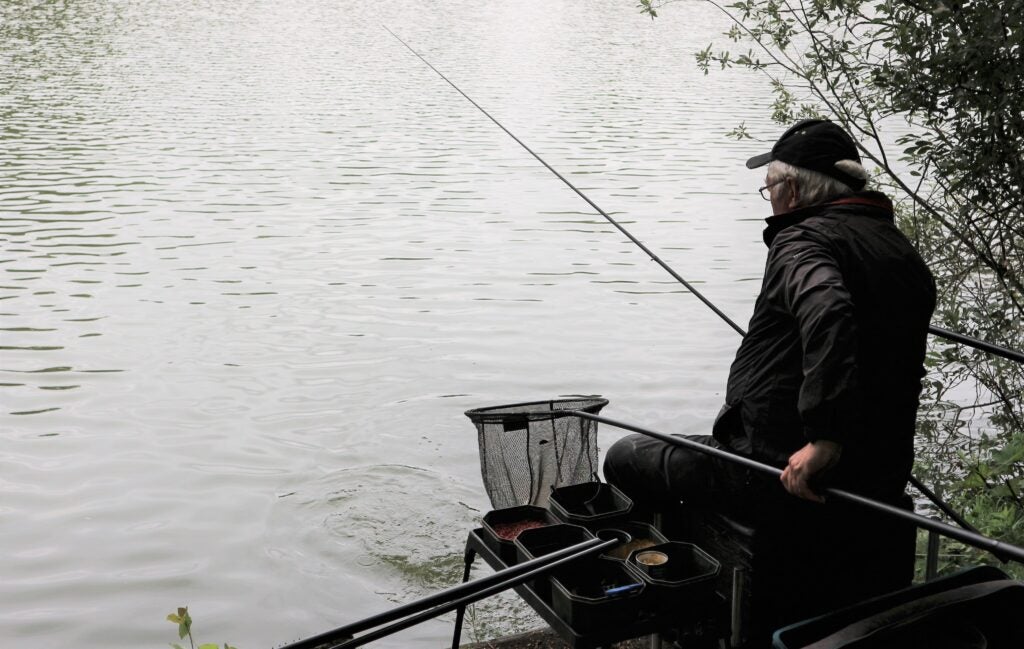
After a few hours the better-sized fish tend to muscle out the smaller ones. It’s a fine line getting to this stage, carefully teasing them into feeding freely near the surface. When using casters, I like to have them as dark as possible without turning into floaters, because in this state they sink more slowly. This creates extra interest every time you feed, the trick being to try and get your rig working in unison with each free helping. I start by hooking a single shell through the fat end, but if I’m missing lots of fast bites, I try nicking the other, thinner end. I don’t know why, but sometimes one way is better than the other. Another important aspect when using thin diameter solid pole elastic is to have it well lubricated. I don’t use liquid silicone anymore, because I found it tended to pull lots of surface muck inside my top kits, gumming them up. Instead, I prefer cheap hair conditioner, which is water-based. A few drops keep everything working smoothly.
GOOD RESULT
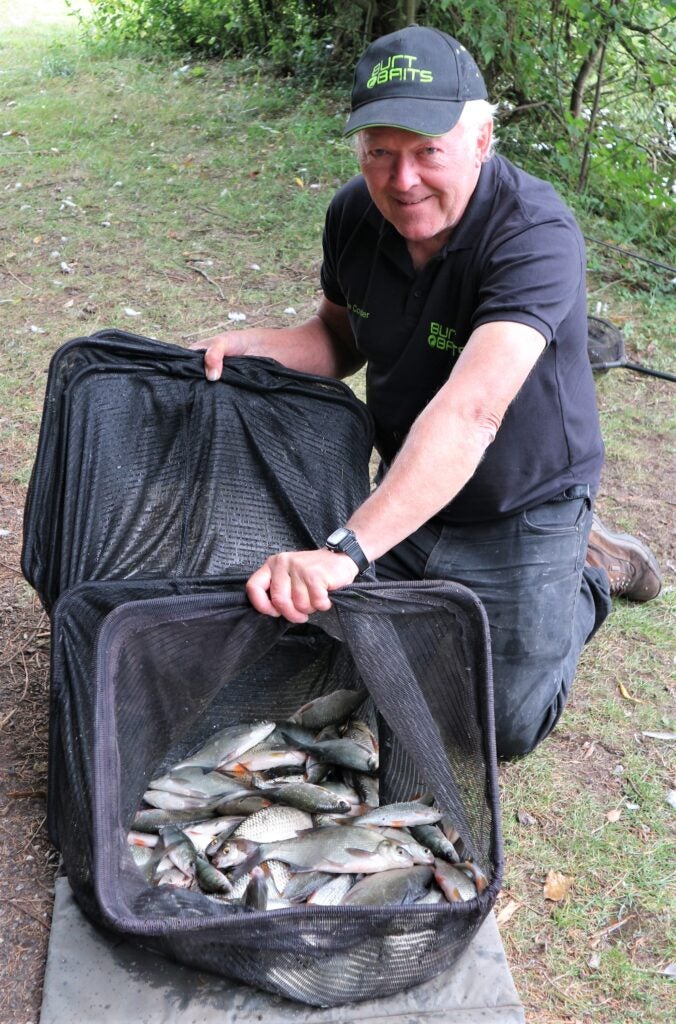
This is a typical haul caught by fishing mainly shallow. There might be a few early bonuses included from the deeper set pole tackle I kicked off with, but at least 80% of these fish were taken with a three feet deep rig in 14ft of water. Sometimes, when it’s a bit cooler, I might also have a mid-depth rig made up for when the fish are not quite so active and won’t come up so near the surface. The main thing is, whether it’s a park lake down in Basildon, Northumbrian reservoirs next to Hadrian’s Wall, or a holiday complex in Lincolnshire close to where I now live, shallow tactics can unearth rich rewards… just about anywhere. It amazes me how few people try this method. On this particular occasion, the Match Lake at Woodland Waters was busy with both locals and holidaying visitors, yet no-one else was catching very much. The reason being, they were all fishing on the bottom and the majority of species in the deep lake were not down there!
REPEAT PERFORMANCE
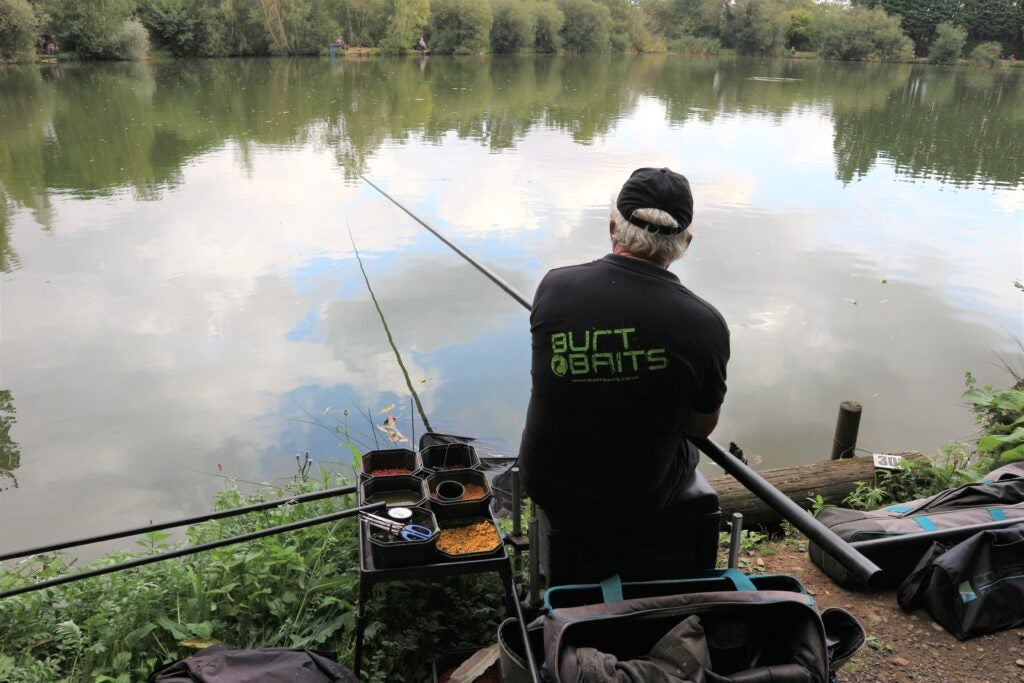
The following week I went back to the same popular lake and it was even busier. I just managed to grab a swim next to a mate and discovered the place was fishing differently from the last outing. This time a lot of anglers were catching on the bottom, mainly with feeder tackle. It was cooler and many of the inhabitants had sunk deeper. I thought it would be interesting to see if the same shallow tactics I used before would still work. As usual, I cupped in a reasonable amount of dark groundbait, laced with micro pellets, chopped worm and casters. Starting with a full depth rig I caught skimmers straight away. But with all the feeders crashing out towards the middle of the lake, I suspected that’s where a lot of the fish population were headed. Bites dried up after 30 minutes on the bottom, so I brought the same shallow rig into play I used before. I had been regularly dinking in small amounts of casters and I started catching roach and hybrids immediately.
TARGET FISH
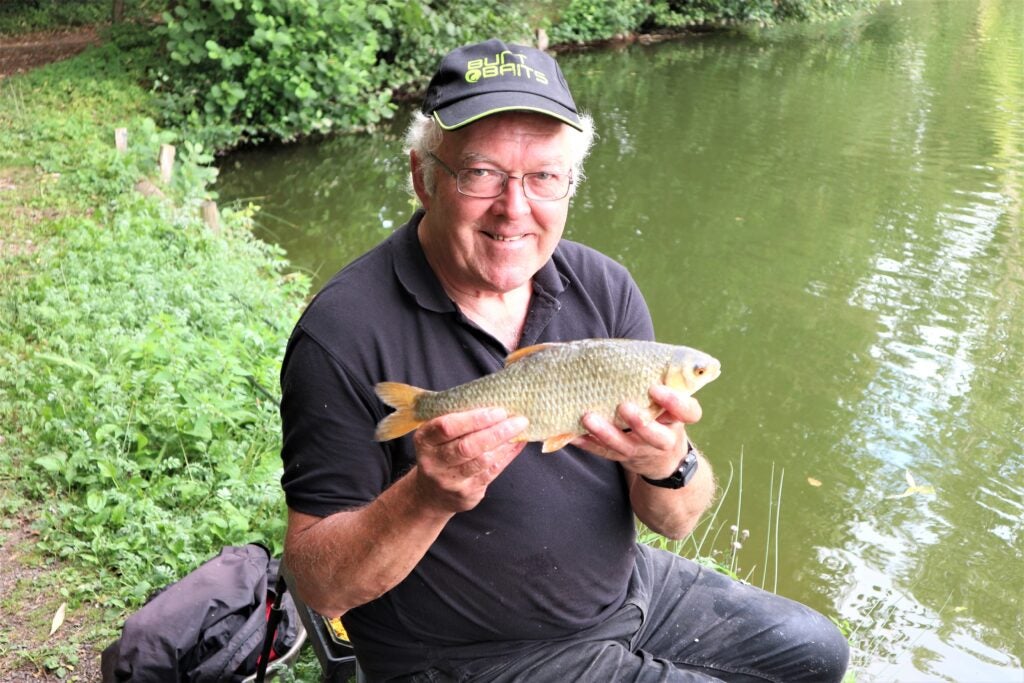
Since I’ve been fishing shallow as a main line of attack, I’ve caught more big roach than ever. This just goes to show how easy it would be to miss these amazing fish by stubbornly presenting hook baits on the deck. It’s pretty hairy when you get attached to fish like this with such light tackle, as they pull fine pole elastic to its limits. A good tip here is to use the new breed of hybrid solid shock absorbers, which stretch further than just about anything else I’ve used. I have this gear set up through top two kits, installed with mini puller bungs. I use the smallest plastic Drennan elastic connectors to attach my rigs, which I prefer to the new Dacron type. With my set-up there’s no jolt when lifting into fish, plus big red fins like this one often pull the shock absorber out for you, once you get them darting through your swim and confidently taking loose feed. Fish like this normally turn up towards the end of sessions, as the light begins to fade.
ANOTHER STRING
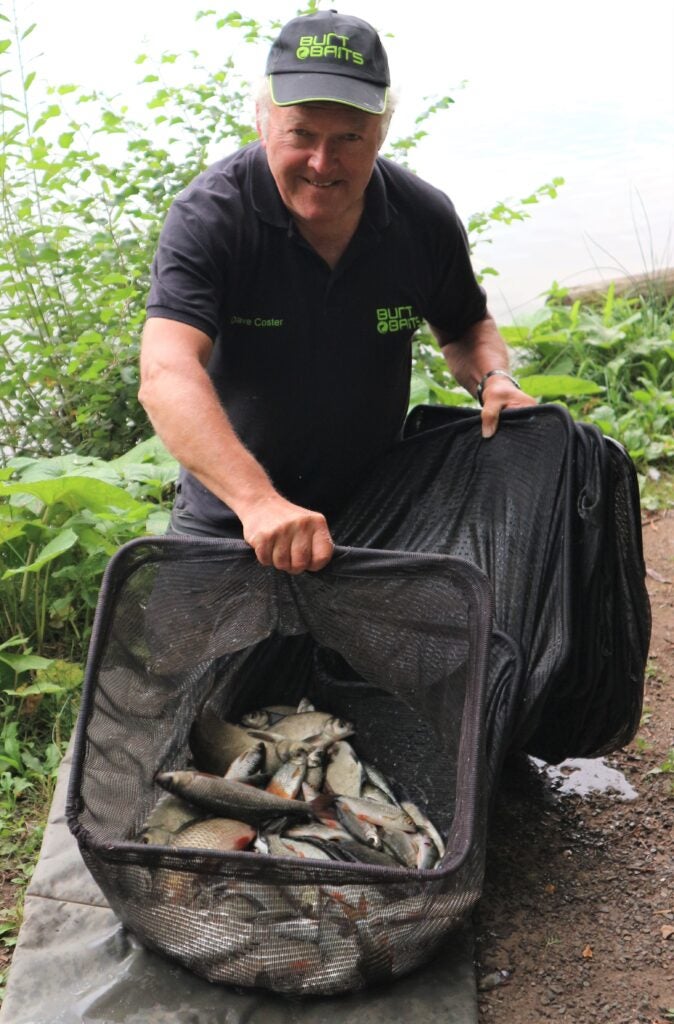
Going back to those early Gloucester Park Lake experiences, learning how to catch fishing shallow opened up another world for me. I was suddenly winning or framing in matches from pegs that never seemed to produce very much to normal tactics. Once loose feed had been going in regularly for a while and a shallow rig came into play, it quickly proved the fish were there. I had another string to my bow, which has worked wonders ever since – from one end of the country to the other. Casters normally make up my fish-attracting loose feed, but maggots or hemp can do a similar job. I’ve even bagged up on roach using small, soft pellets on a few occasions. Surprise fish can turn up too. I’ve latched into a few rare stillwater chub, huge hybrids, big perch and proper bronze bream. The main attraction for me is keeping busy, enjoying hectic sessions where the float keeps going under. It’s a method that works when nothing else is producing.

